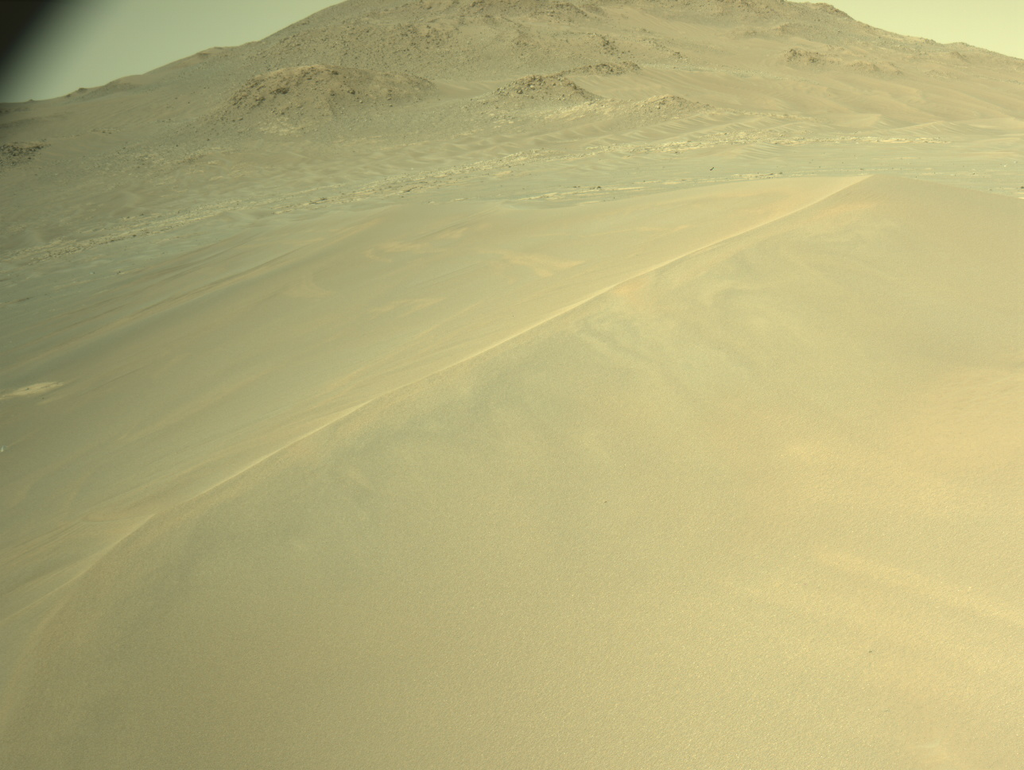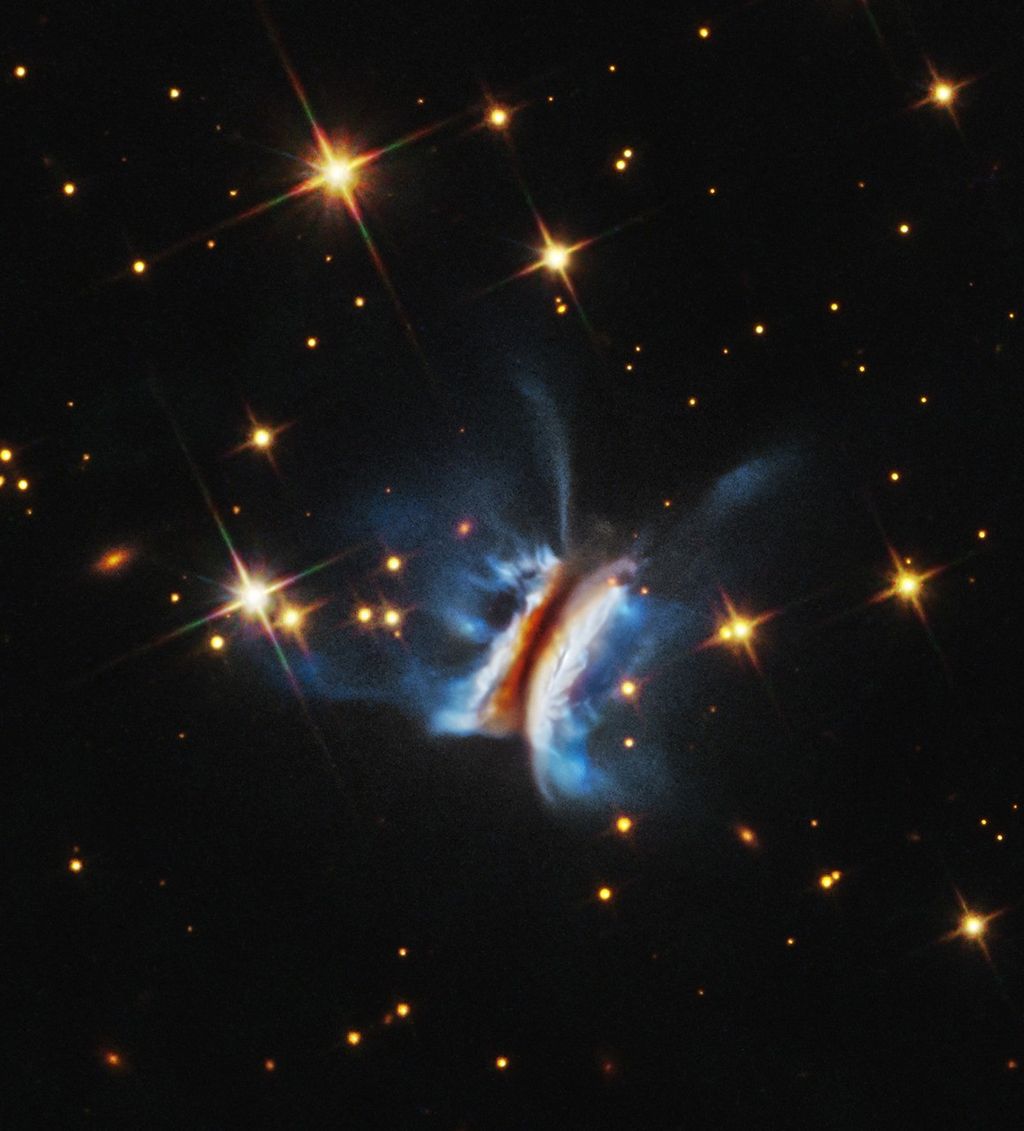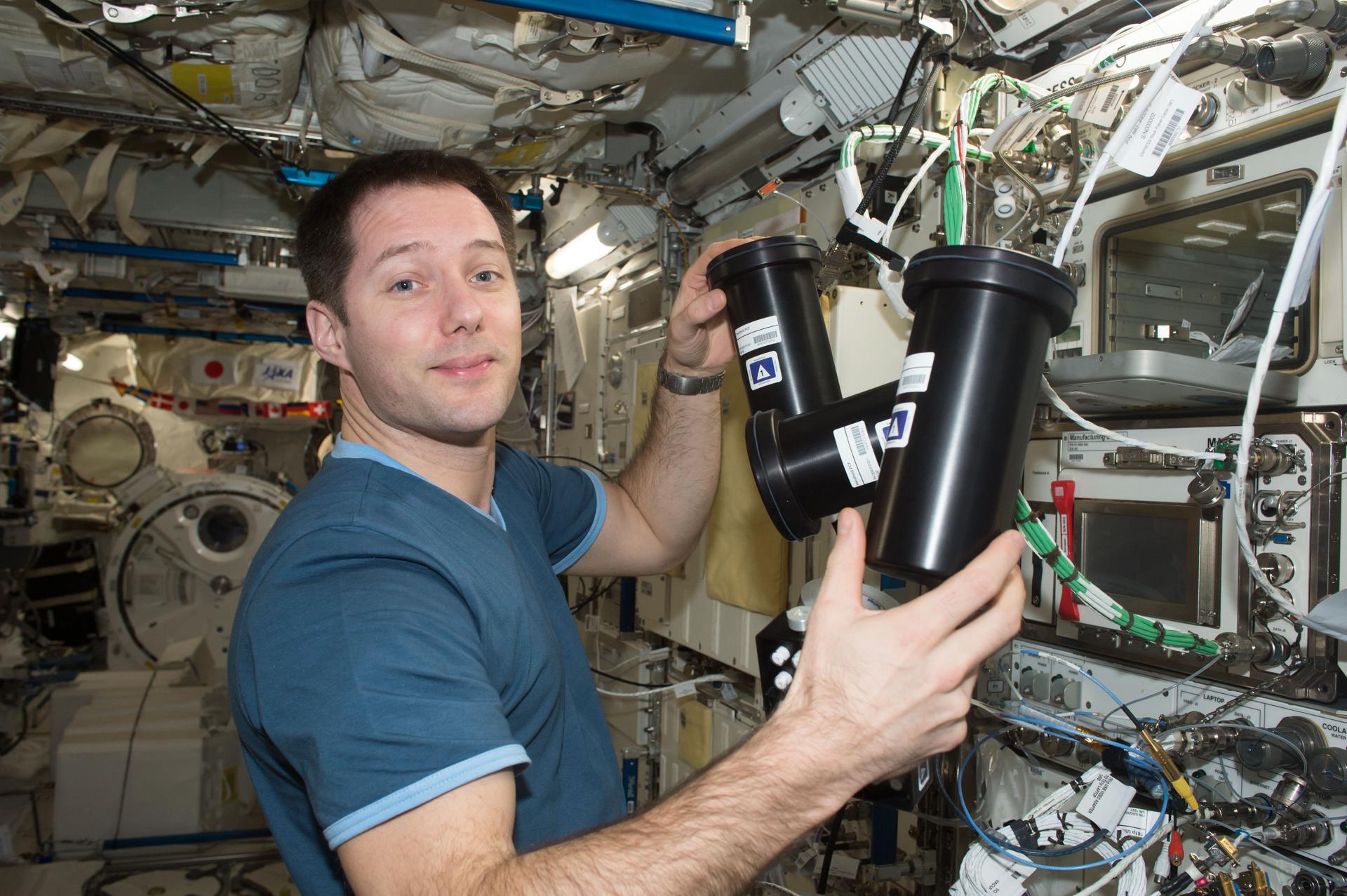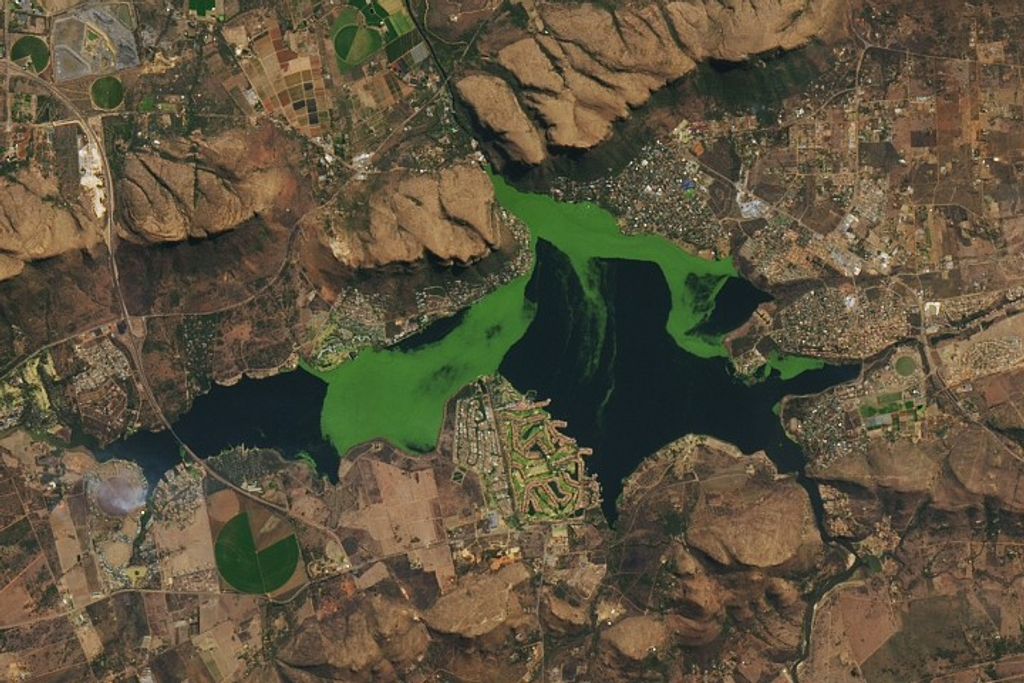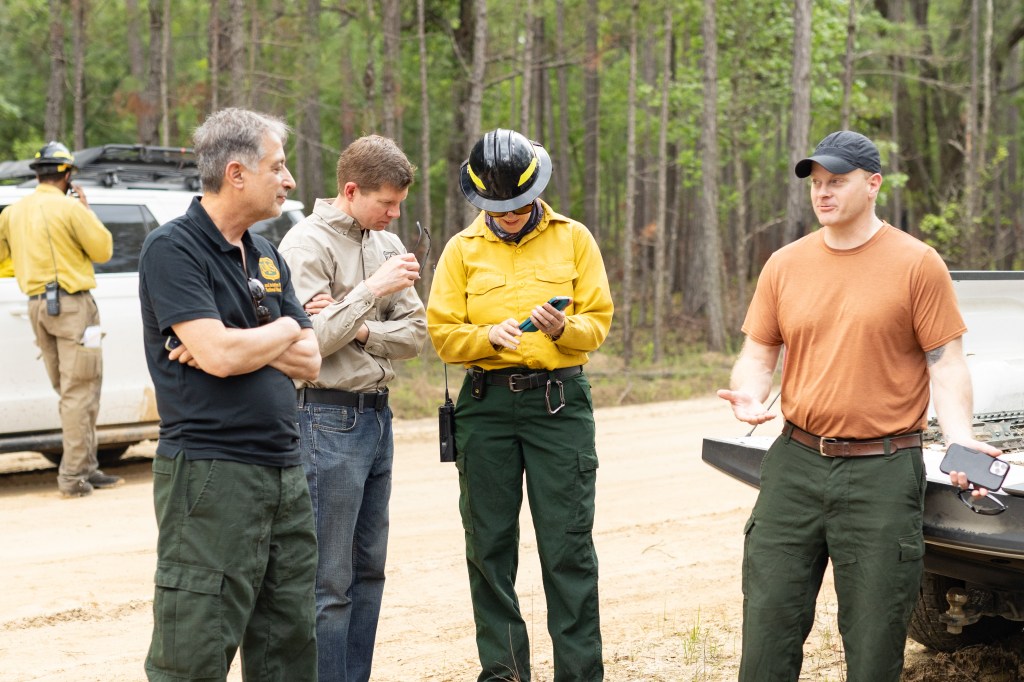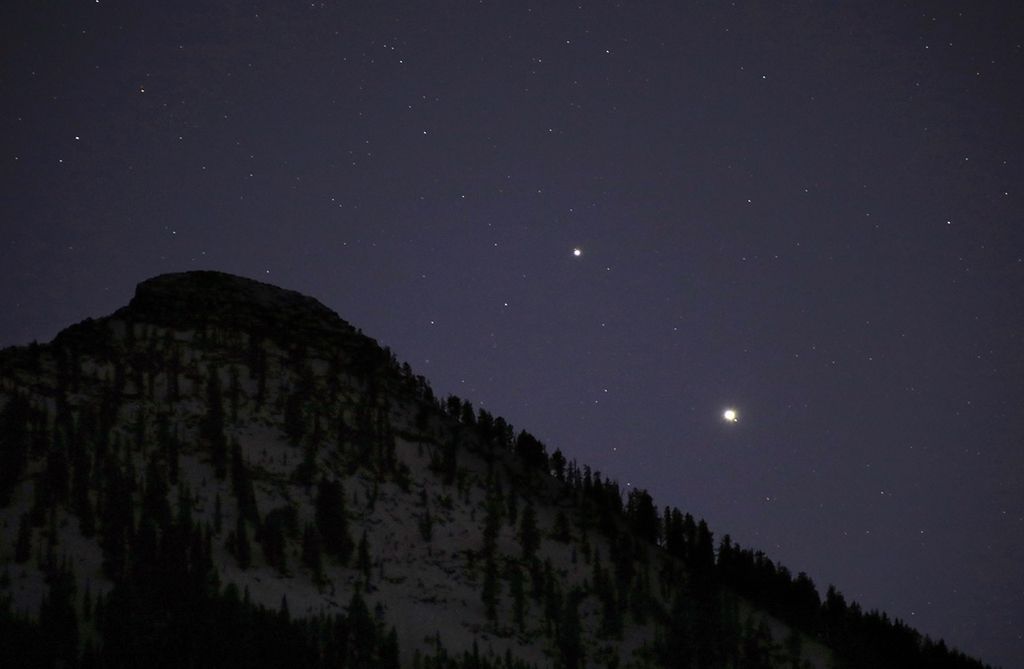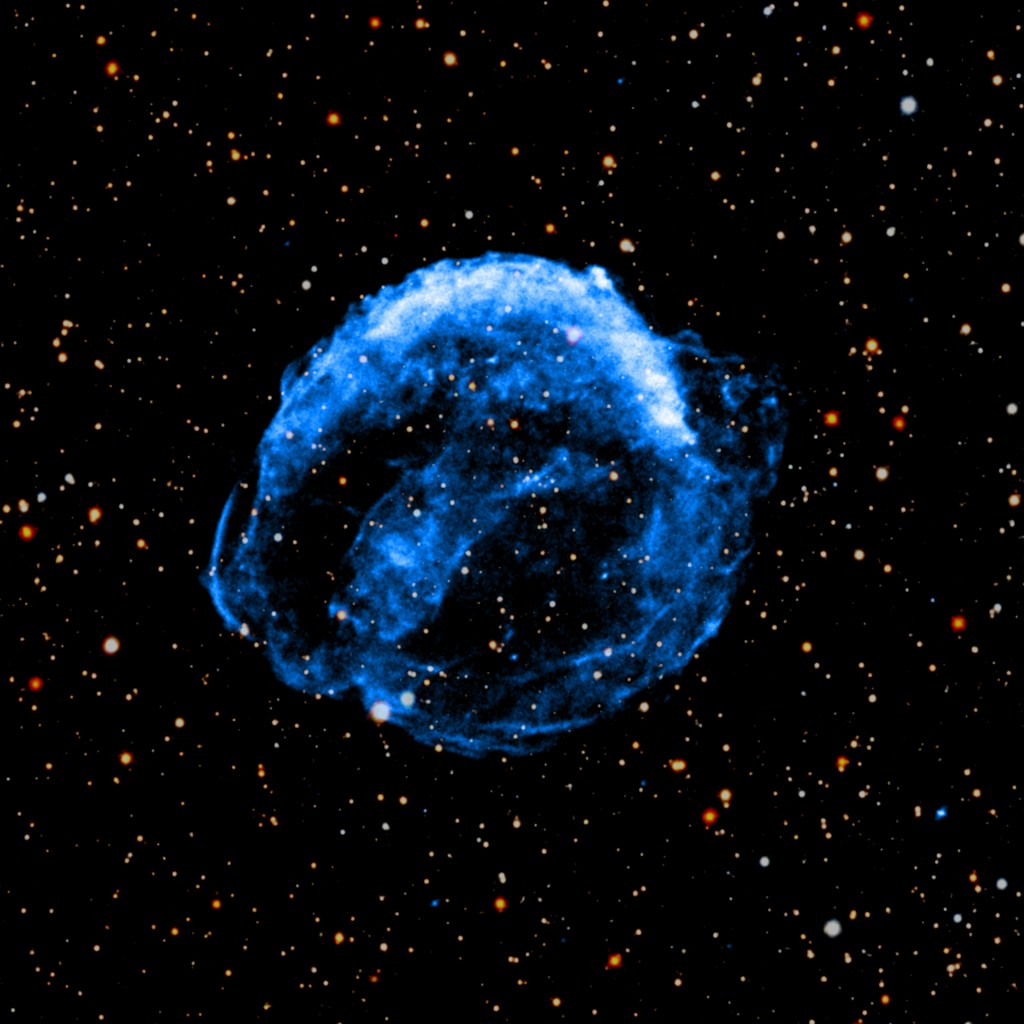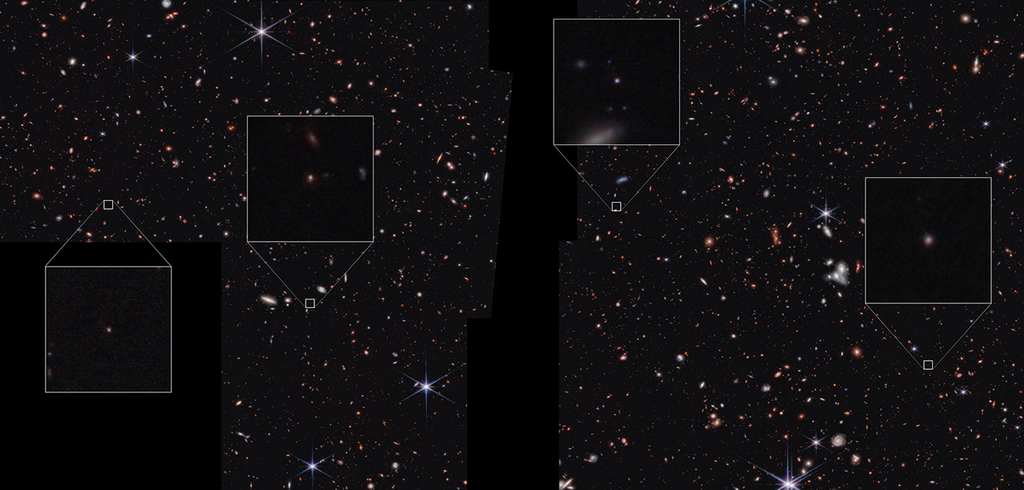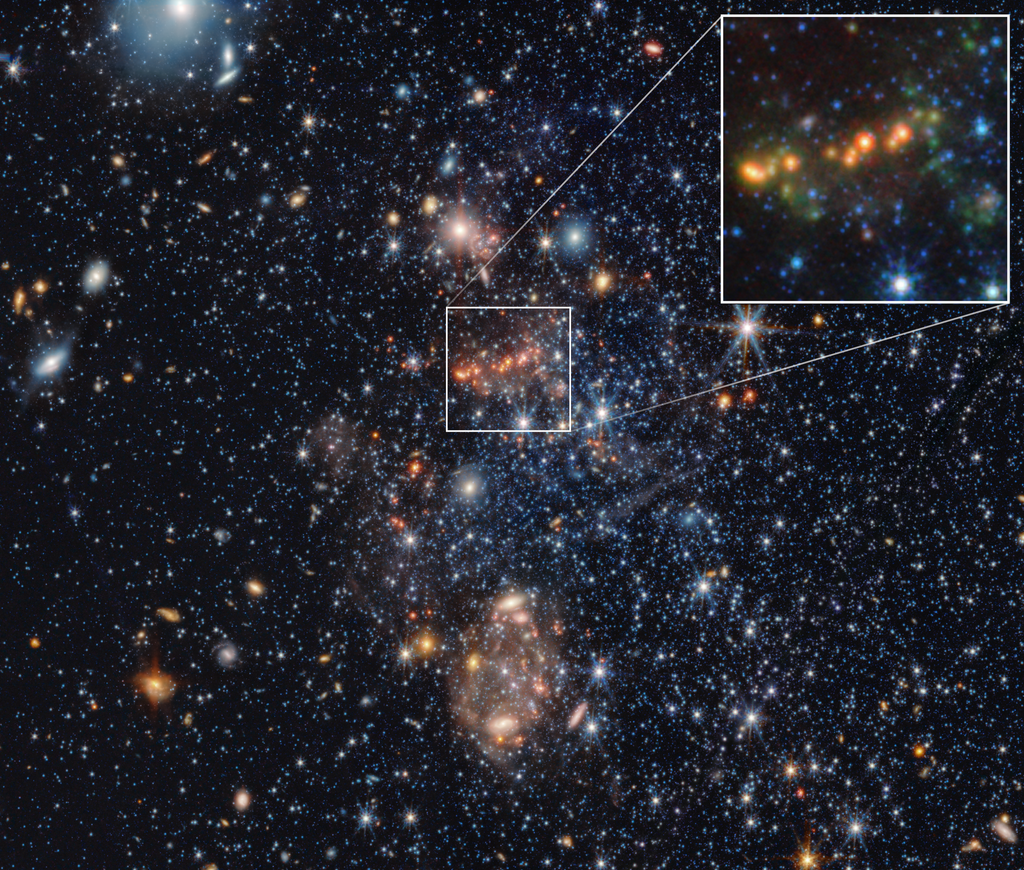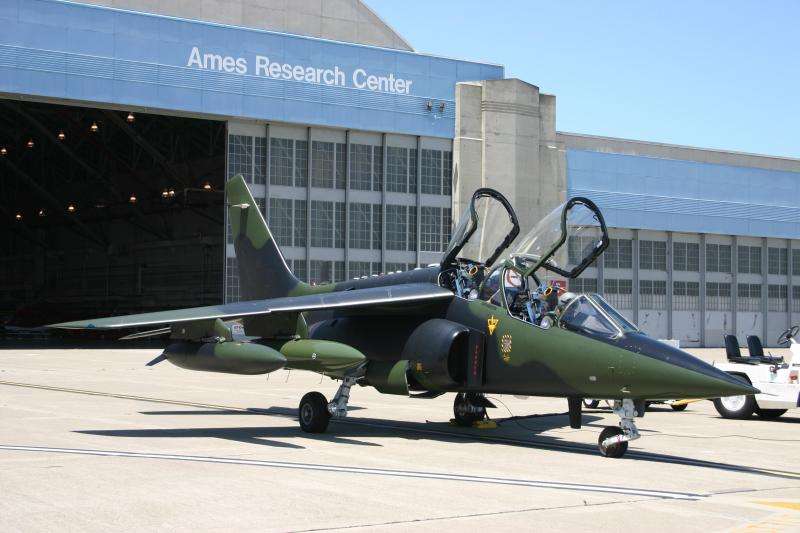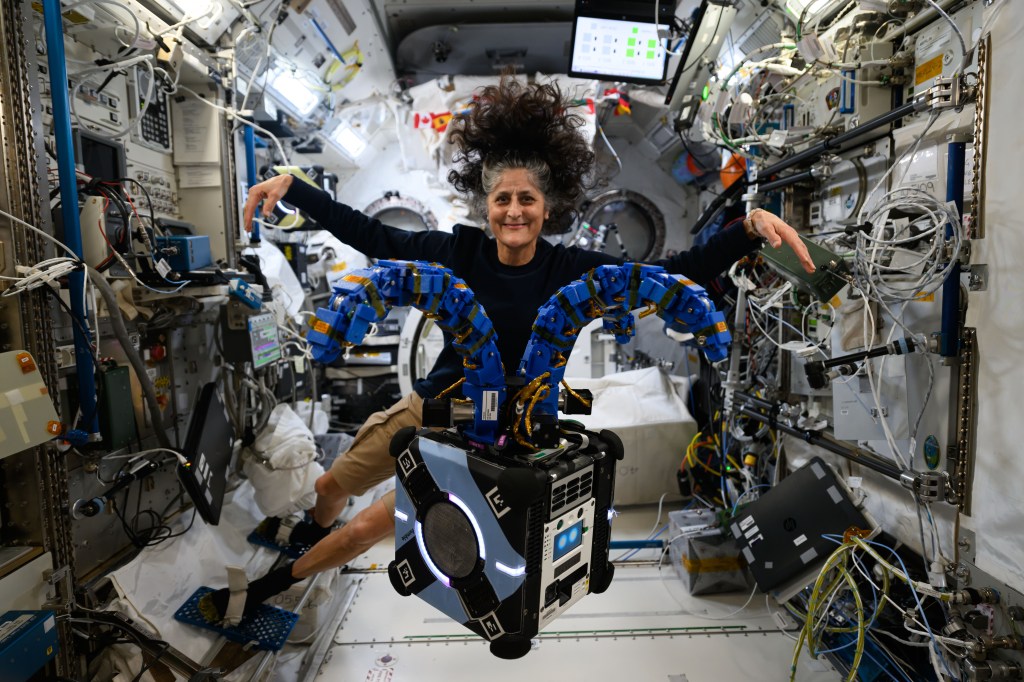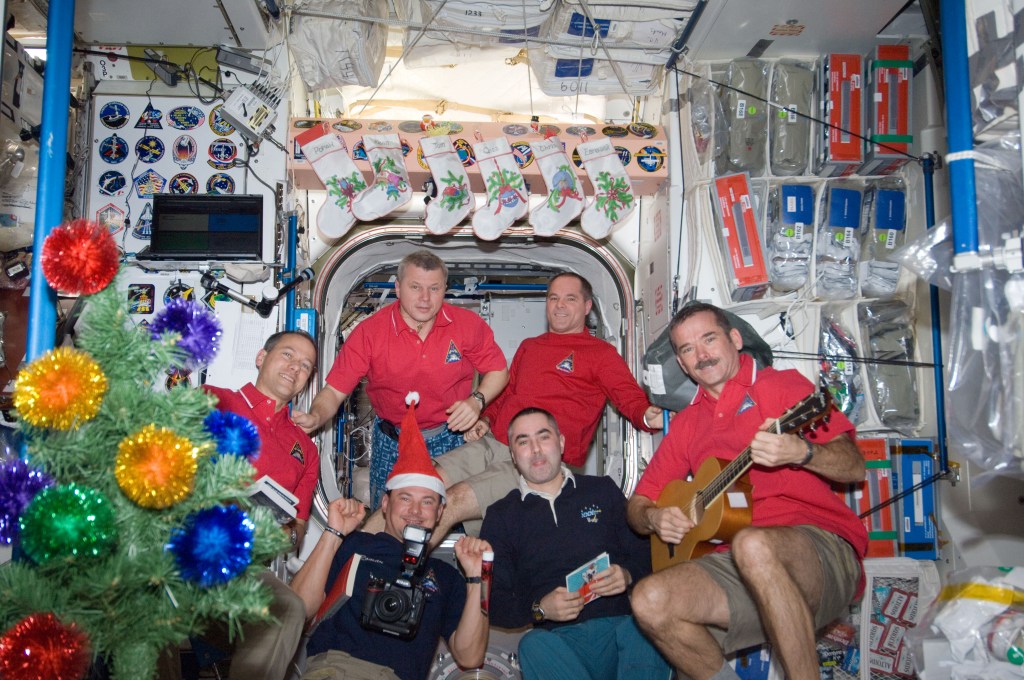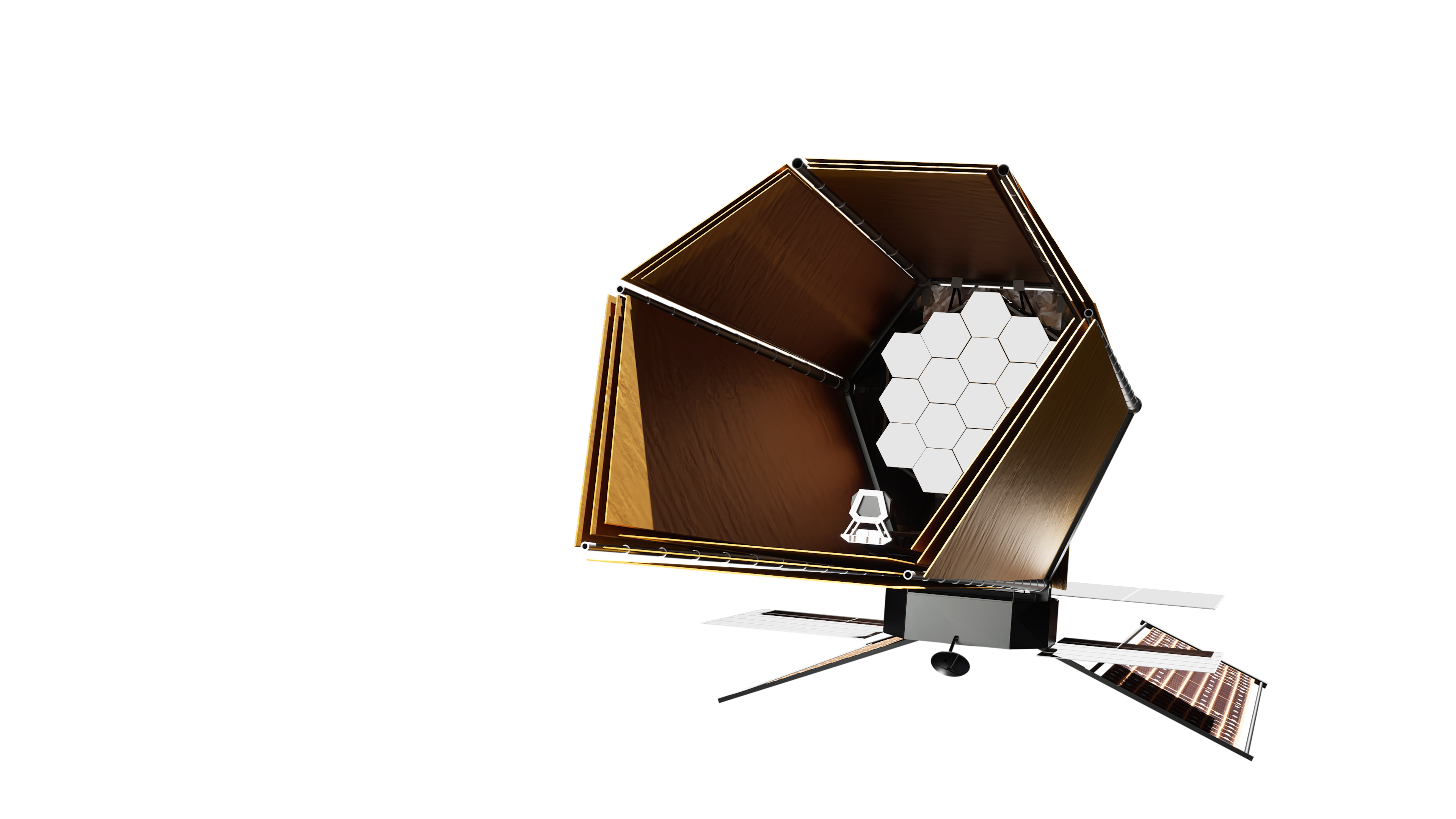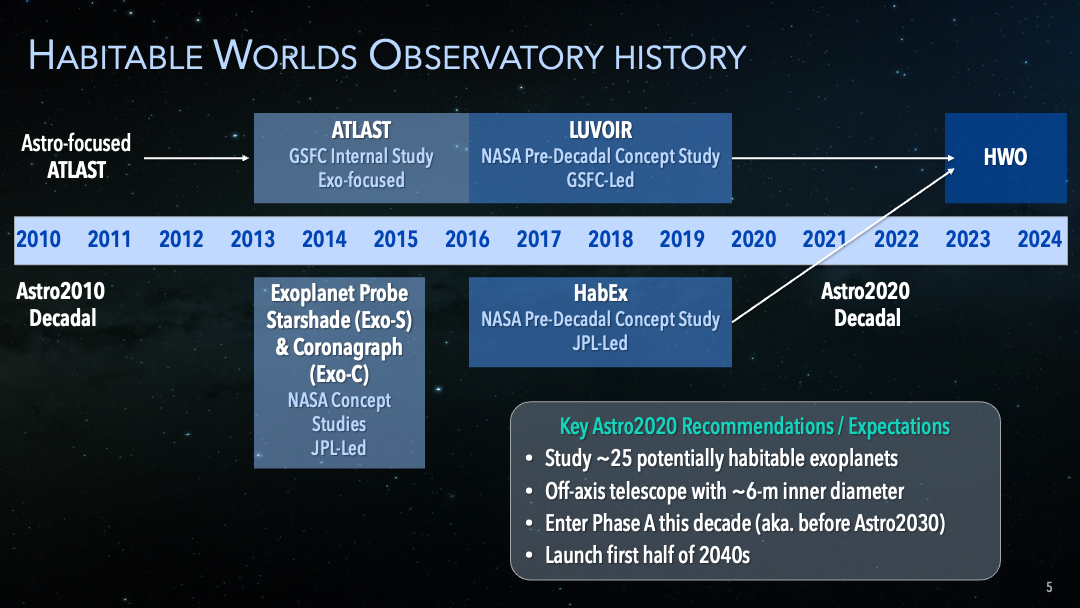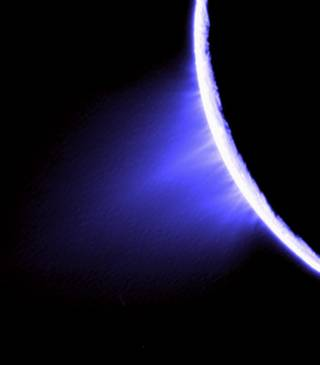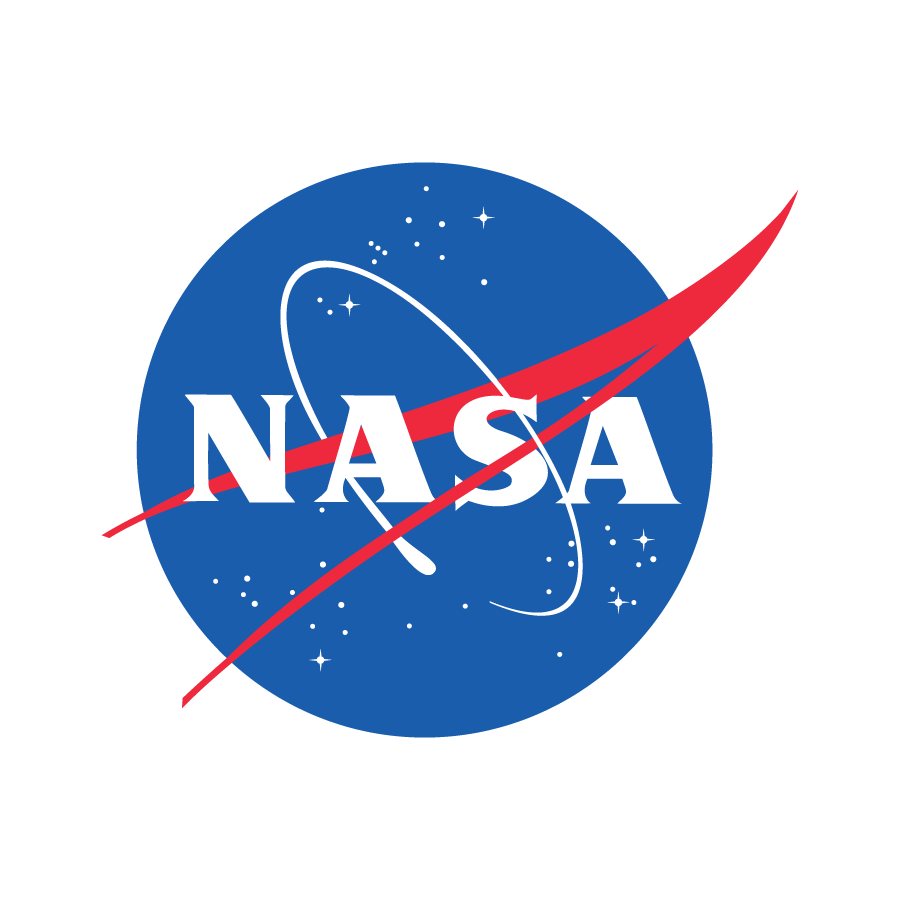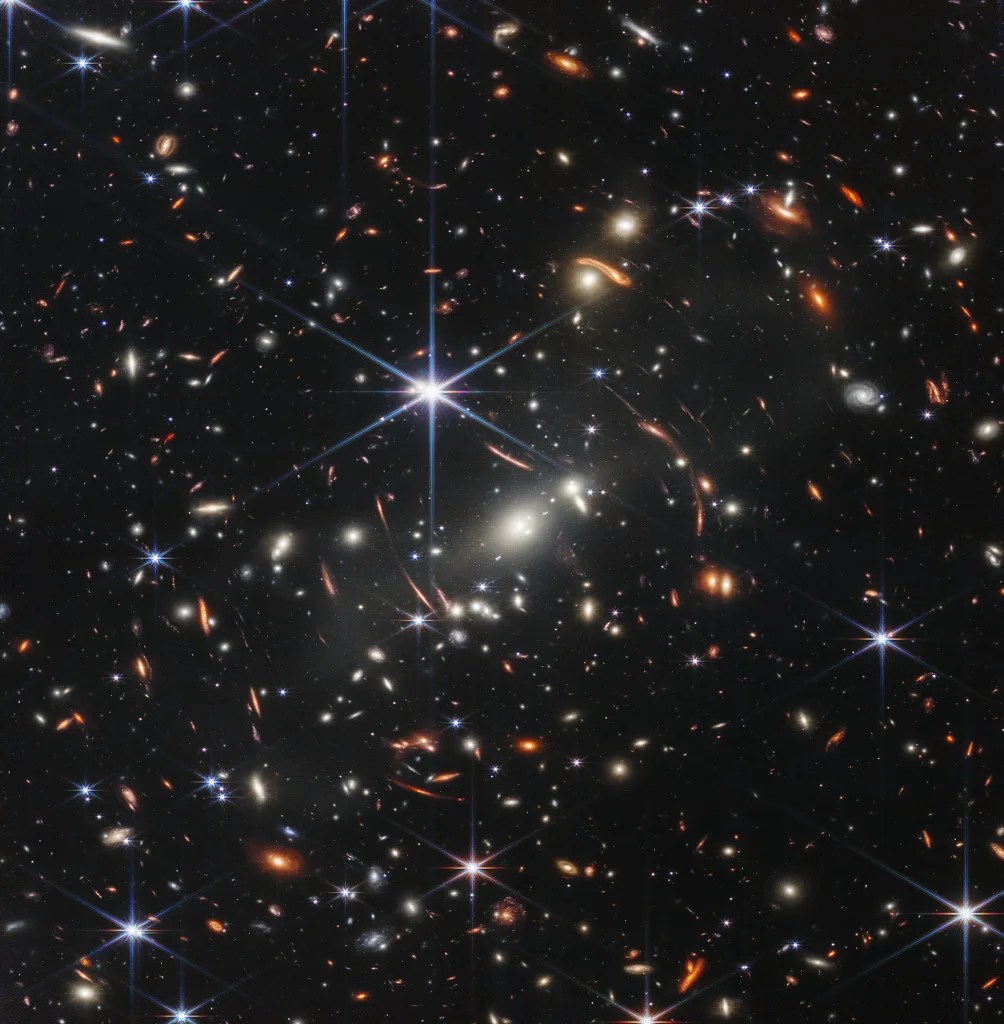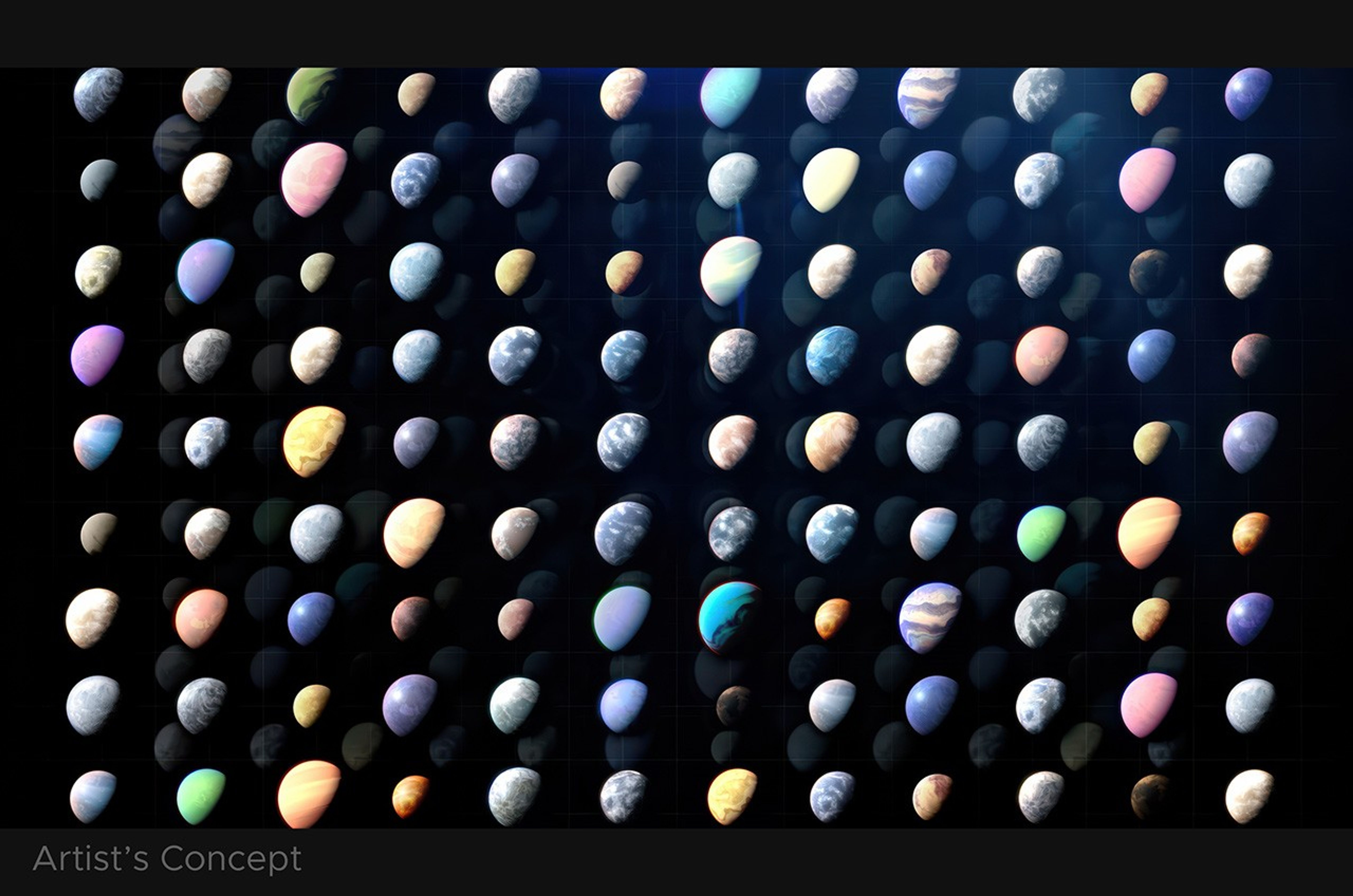HWO Mission History
A brief overview of the concepts that led to HWO.
"What exists?" is an age-old question that drives humanity's quest to know about the world around us. It has led us to discover that the night sky is inhabited by other stars and other worlds orbiting them. At this crucial point in human history, tracing a path from the dawn of the universe to life-bearing worlds is within our grasp. Our drive to know now goes beyond asking "what exists?" to "why does it exist?"
The Habitable Worlds Observatory is the tool that will provide new and powerful ways to observe the universe and expose its birth and evolution.
HWO Past and Present
The Habitable Worlds Observatory grew out of four concept studies, led by both the Jet Propulsion Laboratory and Goddard Space Flight Center: ATLAST, Exo-S and Exo-C, the Habitable Exoplanet Observatory (HabEx), and the Large UV/O/IR surveyor (LUVOIR).
Advanced Technology Large-Aperture Space Telescope (ATLAST)
ATLAST was a four-institution design study led by Goddard Space Flight Center of a 10 m-class UV/O/IR observatory concept. It was designed to be a powerful, general-purpose, non-cryogenic, serviceable, and upgradeable observatory operating from 0.1 to 1.8+ microns wavelengths. Science goals for the observatory concept included the search for biosignatures on exoplanets and a wide variety of astrophysics topics.
Exoplanet Probe Starshade (Exo-S) & Coronagraph (Exo-C)
NASA initiated Science and Technology Definition Teams to study two concepts aimed at direct observations of exoplanets and debris disks. The challenge of these concepts was high-contrast imaging—the suppression of light from bright nearby stars in order to image faint objects around them, like planets and orbiting dust disks generated by extrasolar asteroids and comets.
Exo-S would use a second spacecraft for starlight suppression—a starshade flying a large distance in front of the telescope—to look closer at nearby Sun-like stars, accessing more habitable zones and Earth-size planets. Exo-C would use an internal coronagraph, allowing observations of planets from giants down to super-Earth sizes.
Habitable Exoplanet Observatory (HabEx)
The Habitable Exoplanet Observatory (HabEx) was a mission concept to directly image planetary systems around Sun-like stars. HabEx would have been sensitive to all types of planets. However, its primary goal was to directly image Earth-like exoplanets and characterize their atmospheric content. By measuring the spectra of those planets, HabEx would have searched for signatures of habitability, such as water, and sensitivity to gases in the atmosphere, possibly indicative of biological activity, such as oxygen or ozone.
In addition to the search for life on Earth-like Exoplanets, HabEx would have enabled a broad range of general astrophysics, from studying the earliest epochs of the history of the Universe to understanding the life cycle and deaths of the most massive stars, which ultimately supply the elements are needed to support life as we know it. These studies will have been enabled by the same technology that would have allowed HabEx to study Earth-like planets: a large, stable telescope in space with unprecedented resolution sensitive to ultraviolet, optical, and near-infrared photos. The Jet Propulsion Laboratory was managing the study.
Large UV/Optical/IR Surveyor (LUVOIR)
The Large UV/Optical/IR Surveyor was a concept for a highly capable, multi-wavelength space observatory with servicing capabilities, following in the heritage of the Hubble Space Telescope. This mission would have enabled great leaps forward in a broad range of science, from the epoch of reionization through galaxy formation and evolution, star and planet formation, and solar system remote sensing. LUVOIR also had the major goal of characterizing a wide range of exoplanets, including those that might be habitable or even inhabited.
The LUVOIR team was considering two architectures: Architecture A, a 15-m primary aperture with four serviceable instruments, and Architecture B, an 8-m telescope aperture with three instruments. The observatory would have resided at the Earth-Sun L2 point.
Hubble, Webb, Roman -> HWO
The Habitable Worlds Observatory will be an innovative mission for a new generation, building on the legacy of its forerunners. We will draw on lessons learned from NASA's extensive experience building state-of-the-art telescopes, like the agency's Webb and upcoming Nancy Grace Roman space telescopes, as well as NASA's Large Mission Study (LMS).
Surveys for exoplanets using the transit method, such as with Kepler and TESS missions, have discovered thousands of planets. However, transit surveys themselves do not measure planetary habitability, and the vast majority of planets do not transit their host stars as seen from Earth. Therefore a different method is required if we aim to detect potentially habitable planets orbiting the nearest stars.
It means developing new technologies first, building on the technical achievements of Webb and Roman. Webb demonstrated cutting-edge technology to block out light from stars to see planets around them. Successfully building and launching Roman within budget and on schedule will lay the groundwork for HWO to follow. Once fully developed and launched, HWO will coordinate and collaborate with other NASA space telescopes and ground-based observatories operating at that time.
Legacy of Light
From their unique vantage point in space, NASA’s astrophysics observatories have shaped our understanding of the universe and our place in it.
Join us as we celebrate three decades of observing the cosmos, reflect on the most groundbreaking discoveries, and look towards the future of scientific exploration.



